One of those names is James Kellison. This American, not very well known, was the founder of one of the kit car companies in the United States in the 60's. The term kit car is loved and hated in equal parts by car enthusiasts. The term kit car is loved and hated in equal parts by car enthusiasts. What is a kit car? Well, it's basically a do-it-yourself (like Ikea) but in car version. One month you buy the fiberglass body. Two months later the chassis. The next month the engine. And when your economy allows it, the suspension and other accessories. In your spare time, you assemble it little by little in your garage, until you get the car you've always wanted. It is something handmade by you, that you can also drive. The car you always dreamed of, for a small amount of money, which you can also pay in installments and assemble it yourself. It doesn't rust over time and it's light and powerful. Ideal.
It was in the United States and the United Kingdom where the kit car shone, perhaps benefited by the type of house that the average citizen bought at the time: detached house with large garage. Subsequently, other manufacturers emerged all over the world, making everything from replicas to original cars. In fact, Lotus started making this type of car before becoming such a prestigious brand. Today they continue to be made, and there is something of an emerging market for such cars. The most recent and exclusive, the Scuderia Glickenhaus SCG 003, not cheap, but a kit car nonetheless.
But back to Kellison and what this small manufacturer achieved.
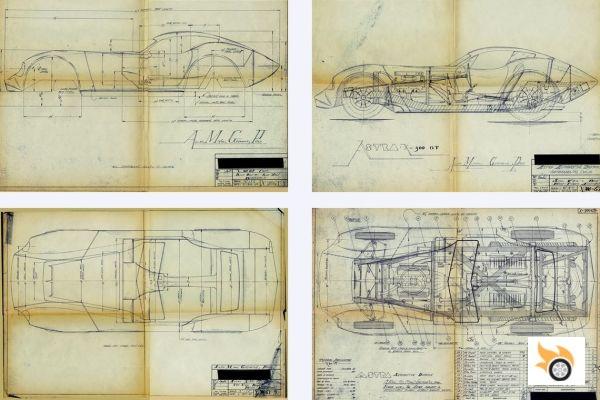
Past
James Kellison was born on November 5, 1932. From a young age he loved speed, and that's what he focused his life on. He became an air force pilot and was passionate about racing... cars. Around 1950 a crazy idea crossed his mind: "What if I built my own racing car?" He wanted to compete head to head with the Porsche, Ferrari and Alfa of the time. Many Americans would have gone bowling and forgotten about the idea, but not Jim. He took pencil and paper, and set about designing a car, a racing car. He spent several years perfecting the design, sourcing materials and devising ways to implement it. He built a few models, to learn how to build it.
Thus it was that in 1957, seven years later, Kellison Engineering was born, officially presenting the Kellison J4, a fiberglass kit car, offered in both coupe and convertible bodywork, at a price of 6,700 dollars at the time, about 50,000 euros today. It can not be considered cheap, but if we compare it with the more than 12,000 dollars that cost a Ferrari 250 GT, it seems more affordable.
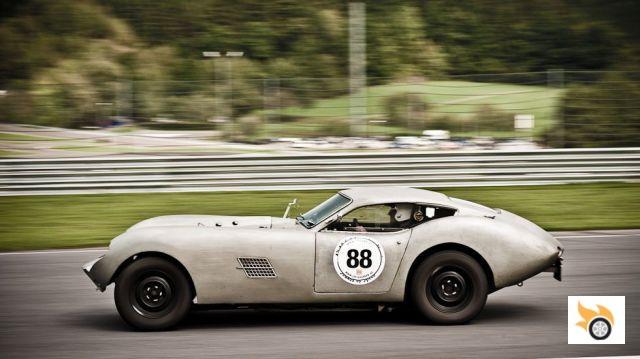
In 1959 Motor Trend magazine tested the Kellison J4. They loved the lines, the fit, the finish, the ride quality... but when they started to push it, the oversteer was such that it became unmanageable. The conclusion of the test was that it was fine as a GT for quiet driving, but impossible as a racing car. Poor Jim was devastated, but he didn't throw in the towel.
How to solve a problem with the chassis? By hiring an expert to do the design. He hired Chuck Manning, a seasoned Indy car chassis engineer. He designed a tubular "X" frame based on race cars and used the suspension from the Corvette of the time, the C2. The result was such a considerable improvement in the car's handling that between 1961 and 1965 it began to win races in the United States. Jim achieved what he had dreamed of, to build a racing car, and compete head to head with the cars of the time.
He continued with the development, evolving the J4 model, giving birth to the J5 and finally the J6. In 1970, Kellison Engineering disappeared, nobody knows exactly why. It is suspected that financial problems were their guillotine. Chuck went back to Indy, and Jim started making buggies, until in 1976 he founded Red Stallion, whose goal was to build a replica Ford AC Cobra. They produced 117 units, but it was not as successful as expected, until September 30, 2004 when he left for good.
He was a great man who had the courage to create the car of his dreams, without experience or great means.
But let's not get melancholic. Let's take a look at his creations.
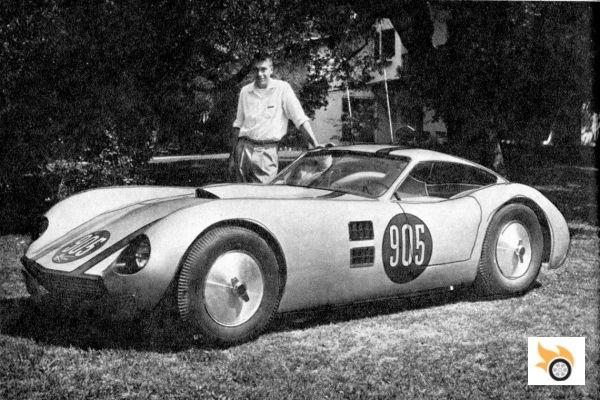
Models
Let's take a look at the main models of his best period.
- J1: It was the first model of the brand. It was a small coupe, designed to be mounted on the chassis of an Austin-Healey Sprite or a Crosley. The roof had that double bubble characteristic of some Fiat-Abarth and Ferrari designed by Zagato.
- J2: It was the cabrio version of the J1 and was sold (without chassis) for 380 dollars of the time. About 20 units were produced.
- J3: Very similar to the J2, but short wheelbase, designed as a racing car. Its price, 400 dollars. About 15 units of the coupe were produced, and 60 units of the convertible.
- J4 GT: As mentioned before, this was Kellison's first production car. It was 4.2 m long, 1.7 m wide, 1 m high and had a wheelbase of 2.5 m, which gave it muscular and exaggerated proportions. It was used as the basis for multiple racing cars. 300 units of the coupe and 25 of the cabrio were produced.
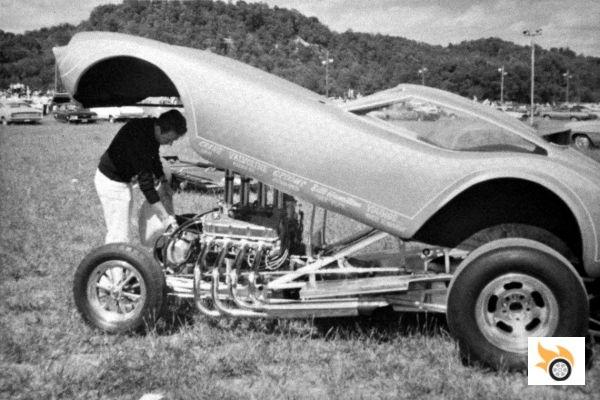
- J5: A modified version of the J4, with some more wheelbase and height, to leave more space. In 1966 the Beattie team built a dragster with this body, pushed by a Hemi block, which achieved the quarter mile in 10.02 seconds at more than 230 km/h. To give you an idea, the Ferrari F12 does the quarter mile in 11.1 seconds. About 400 units were produced.
- J6 Panther: One of Kellison's most beautiful designs. It was 4.2 m long, 1.6 m wide and 1.2 m high. It continued to be a stamp of wild, exaggerated and sexy beauty. This model was intended to be mated to a Corvette C1 chassis. More than 500 units were produced.
- In 1963, based on the J6, a gentleman named Bob McNulty (pictured below) decided it wasn't enough. He was fascinated by Ferraris, but couldn't afford it, so he put another twist on the Kellison J6 and changed the nose, sides, wheels and interior. Personally I find the Kellison J6 more beautiful, it keeps that brutal beauty of the Kellison, with some refinement. A very successful combination.
- Astra X-300 GT: This is not the Opel Astra. In the mid 60's, most Kellison's were sold by Allied Fiberglass, under the Astra brand. It was a modification of the J4, to which they changed some details such as the grille. 500 units were produced.
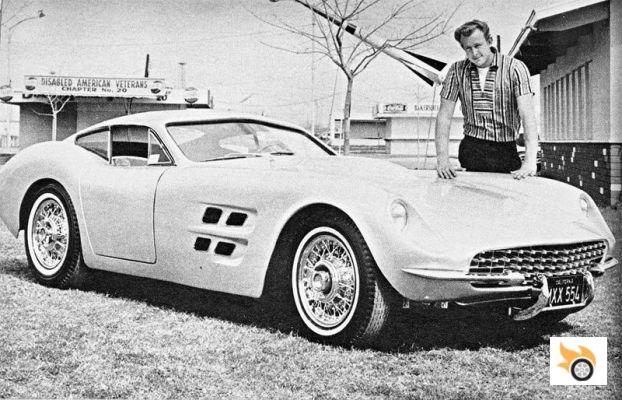
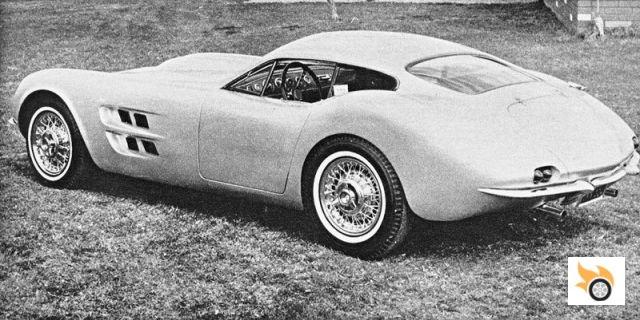
Design
Let's talk about the design of Bob's J6, which from my point of view, is one of the most beautiful. At the front we see a more elaborate grille design, flanked by the headlights, very extreme, to accentuate the feeling of width. The bumpers, reduced to the minimum expression, give cleanliness to the design. It is an extremely low car, so the windshield is very small.
Looking at the side we see the raison d'être of Kellison: huge nose, cabin next to the rear axle, very marked shoulder, and very smooth fall of the roof to the rear. Due to its low height, and its proportions, the side is imposing, very much in the style of Mazda's RX-9 prototype. A classic sports car, but brutal and exaggerated. Therein lies its charm.
Moving to the rear, we see that it merges the fall of the roof, with the low, in a chrome bumper, with two pilots on each side. The huge shoulders, with the narrowing of the C-pillar, very Porsche 911 style, give a lot of character to this Kellison.
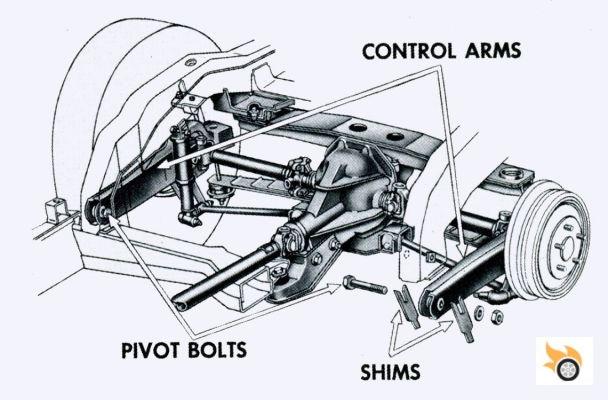
Technology
Since it took the chassis of the Corvette C2, it had the same base: double wishbone front suspension, and independent rear suspension, with a transverse leaf spring scheme, a longitudinal arm, and a transverse arm on each side. Very exotic for that time, where the rigid axle with Panhard bar was so popular, although very effective, making the support of the vehicle was much better.
As for engines, there was total freedom. With that engine bay, almost any engine of the time could be fitted. The most common, the Hemi V8 RB-383 and RB-413, its name comes from the cubic capacity, so the RB-383 had 6.3 liters, and the 413, 6.8 liters. The 383 had 305 bhp while the 413 offered 330 bhp, thanks to its twin-body carburettor.
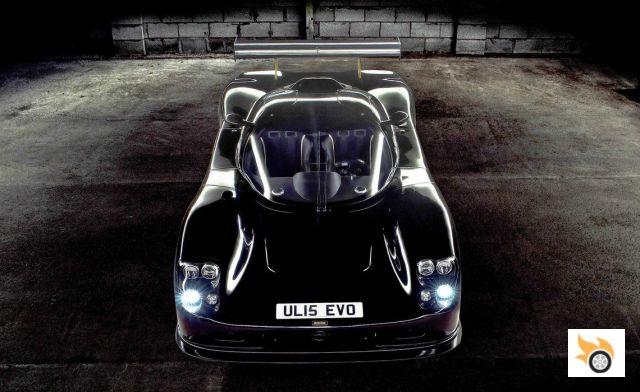
Present
To this day, no Kellison is produced. Although there are people who sell the old bodies, and some restoration projects are made with them, like the one you can see in the video below. That's the good thing about fiberglass, it doesn't rust. But not everything ends with Kellison. Nowadays it is possible to get a kit car, if we have time and money. There are many different designs and types. There are many manufacturers of Lotus Seven replicas for example in the UK or Canada. One of the official replicas can be found in Super7Cars. We can also highlight in the UK to Ultima Sports, manufacturer of a racing car like the Ultima GTR. Also from this country is Hawk Cars, perhaps the best replica of a Lancia Stratos.
In Spain unfortunately, due to the restrictive legislation we have, it is difficult to find a company that sells us a car of this type.
On the other hand, in the United States, there is a market with a lot of movement. From there we can highlight Factory Five, with its replica of the Cobra Daytona. Or one of the most famous, Superperformance, officially licensed to replicate the beautiful Ford GT40. In short, a kit car is the dream come true to build a car by yourself, something that would be very complicated if it wasn't for pioneers like James Kellison, who also realized his dream, creating one of the most original, genuine, brutal and authentic kit cars we have ever seen.
I leave you a video of a fully restored 1962 Kellison J6, where you can appreciate its beauty, and the great gurgling of its V8:

























